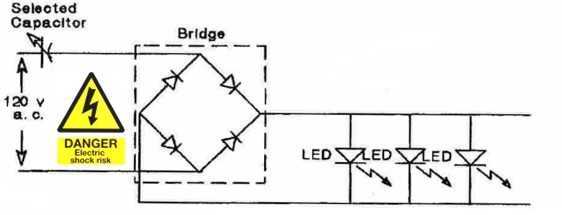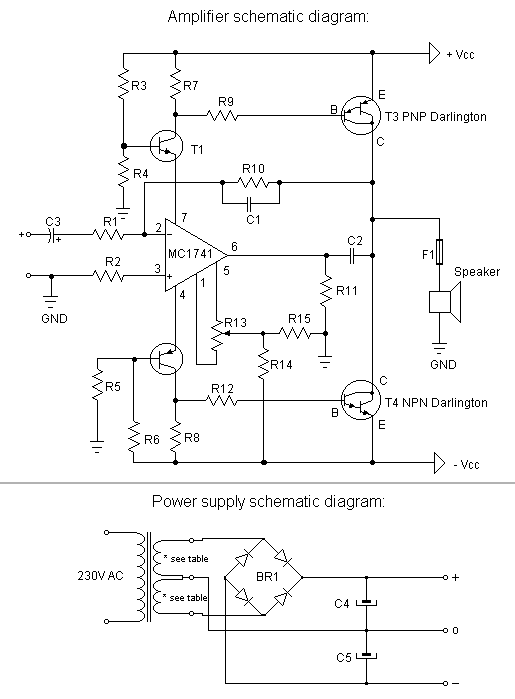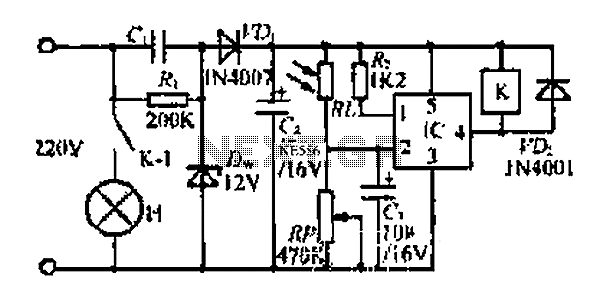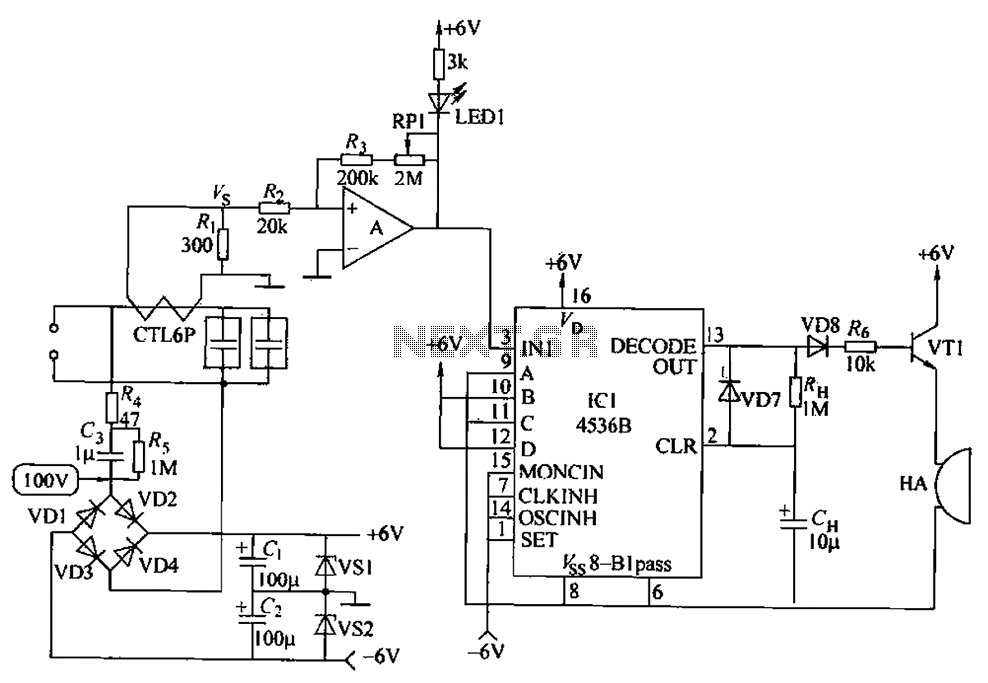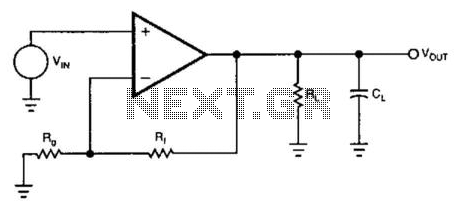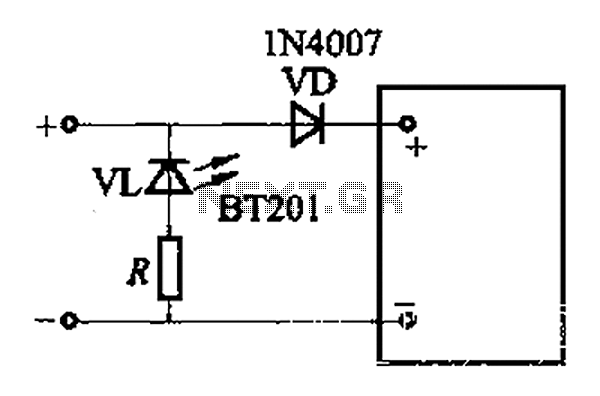
Power Supply +50V 3A stabilized and regulated
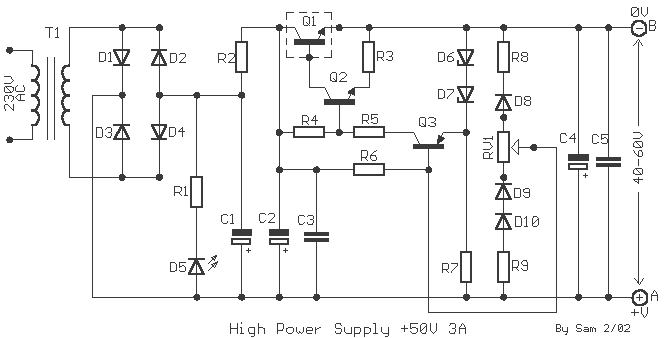
Many times we needed a stabilized, together regulated power supply and high relatively output voltage. These specifications him it cover our circuit. It’s a circuit that can give in his exit + 40V until + 60V 3A, with simultaneous stabilization. The materials that use is very simple and will not exist difficulties in the manufacture, is enough you are careful certain points. 1] For output voltages smaller of + 50V until + 40V, the Q1 is hot enough, so that it needs one big heatsink. 2] For output voltages bigger of + 50V up to + 70V, the stabilization is not satisfactory.
The described circuit functions as a regulated power supply capable of delivering an output voltage ranging from +40V to +60V with a maximum current output of 3A. The design emphasizes the need for stabilization in the output voltage, which is critical for applications requiring consistent performance under varying load conditions.
The circuit likely incorporates a linear voltage regulator or a series of transistors configured to manage the voltage output effectively. The mention of Q1 suggests a transistor-based design, which acts as the primary control element in regulating the output voltage. It is essential to select a transistor rated for high voltage and current to ensure reliable operation within the specified parameters.
To manage heat dissipation, particularly when outputting voltages below +50V, a large heatsink is necessary for Q1 to prevent thermal overload. The choice of heatsink should be based on the thermal resistance required to maintain the junction temperature of the transistor within safe limits, considering the expected load current.
For voltages exceeding +50V, the circuit's stabilization performance diminishes, indicating that the design may require additional components such as feedback loops or compensation networks to enhance stability at higher output levels. This could involve using operational amplifiers or additional transistors to improve regulation and minimize ripple in the output voltage.
Overall, careful attention to component selection, thermal management, and circuit layout is essential to ensure that the power supply performs reliably across its specified voltage range while providing the necessary current output.Many times we needed a stabilized, together regulated power supply and high relatively output voltage. These specifications him it cover our circuit. It `s a circuit that can give in his exit + 40V until + 60V 3A, with simultaneous stabilization. The materials that use is very simple and will not exist difficulties in the manufacture, is enough you are careful certain points.
1 ] For output voltages smaller of + 50V until + 40V, the Q1 is hot enough, so that it needs one big heatsink. 2]For output voltages bigger of + 50V up to + 70V, the stabilization is not satisfactory. 🔗 External reference
The described circuit functions as a regulated power supply capable of delivering an output voltage ranging from +40V to +60V with a maximum current output of 3A. The design emphasizes the need for stabilization in the output voltage, which is critical for applications requiring consistent performance under varying load conditions.
The circuit likely incorporates a linear voltage regulator or a series of transistors configured to manage the voltage output effectively. The mention of Q1 suggests a transistor-based design, which acts as the primary control element in regulating the output voltage. It is essential to select a transistor rated for high voltage and current to ensure reliable operation within the specified parameters.
To manage heat dissipation, particularly when outputting voltages below +50V, a large heatsink is necessary for Q1 to prevent thermal overload. The choice of heatsink should be based on the thermal resistance required to maintain the junction temperature of the transistor within safe limits, considering the expected load current.
For voltages exceeding +50V, the circuit's stabilization performance diminishes, indicating that the design may require additional components such as feedback loops or compensation networks to enhance stability at higher output levels. This could involve using operational amplifiers or additional transistors to improve regulation and minimize ripple in the output voltage.
Overall, careful attention to component selection, thermal management, and circuit layout is essential to ensure that the power supply performs reliably across its specified voltage range while providing the necessary current output.Many times we needed a stabilized, together regulated power supply and high relatively output voltage. These specifications him it cover our circuit. It `s a circuit that can give in his exit + 40V until + 60V 3A, with simultaneous stabilization. The materials that use is very simple and will not exist difficulties in the manufacture, is enough you are careful certain points.
1 ] For output voltages smaller of + 50V until + 40V, the Q1 is hot enough, so that it needs one big heatsink. 2]For output voltages bigger of + 50V up to + 70V, the stabilization is not satisfactory. 🔗 External reference
